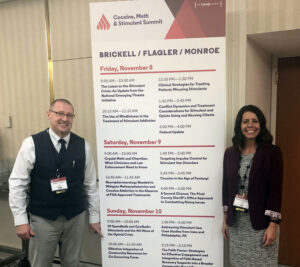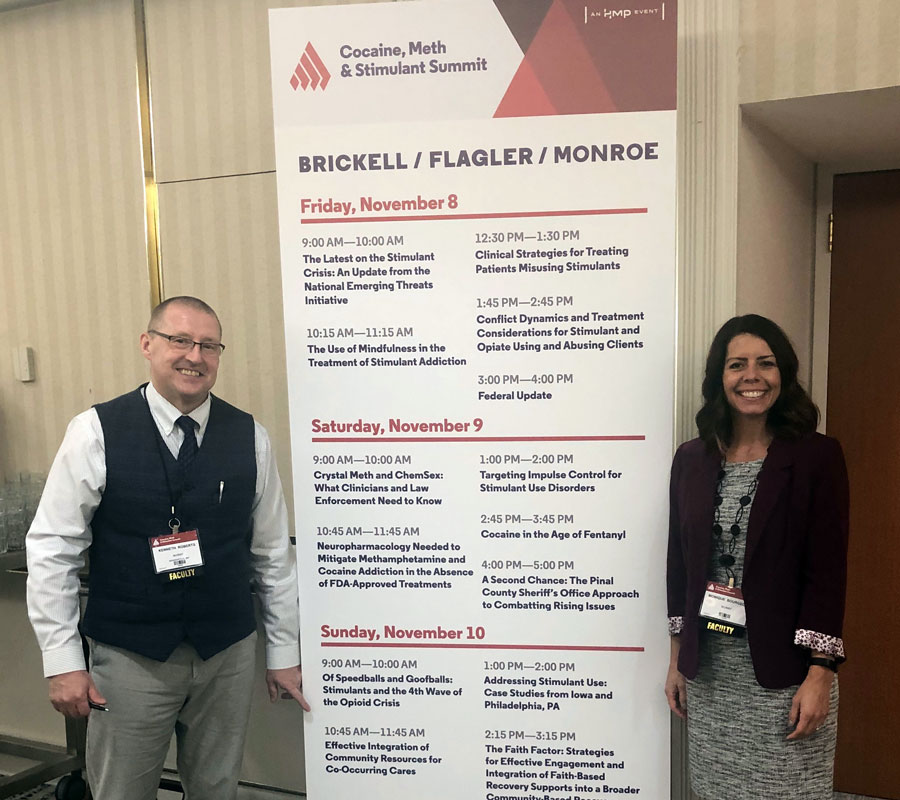
From 1999 through 2016, the age-adjusted rate of drug overdose deaths in the United States more than tripled, largely driven by opioid misuse. While the opioid epidemic continues despite concerted efforts to limit prescriptions of opioid pain relievers, the misuse of a dangerous non-opioid has also been escalating as well. According to the Centers for Disease Control and Prevention, the rate of overdose deaths involving the stimulant methamphetamine more than tripled from 2011 to 2016.
The Bureau of Justice Assistance (BJA), a subdivision of the US Department of Justice, recently issued a 40-page report on the resurgence of methamphetamine in which it unequivocally stated that “law enforcement and public health resources around the country, including forensic laboratories, have reported marked increases in the use, abuse, and availability of methamphetamine.”
The report lists two main factors for the resurgence of a drug that was the focus of the government’s war on drugs two decades ago. “The primary factor is a paradigm shift in production and distribution of methamphetamine.”
While in previous years, meth was “cooked” in homegrown labs in the US, the production now mostly originates in “Mexican super labs,” run by groups the Justice Department calls “transnational criminal organizations” or TCOs. “These labs produce greater-yield, highly potent, and comparatively inexpensive methamphetamines, all of which heighten the potential for substance abuse.”
The second factor links the meth resurgence to the ongoing opioid epidemic. “Producers of methamphetamine have been known to form collaboratives with opioid manufacturers to obtain the drug outright or to obtain the precursors of opioid synthesis.” At the same time, the BJA report concedes elsewhere that “the resurgence of methamphetamine may also suggest a trending away from opioid abuse.”
Indeed, the resurgence of methamphetamine can be seen as the result of the intense efforts of law enforcement and public health officials to contain the opioid epidemic, primarily by restricting access to opioid pain relievers. As soon as it becomes more difficult to obtain prescription opioids, however, people in active addiction simply switch to different substances.
Since the current version of the American addiction crisis is primarily presented as an “opioid” epidemic rather than as an addiction problem, most of the focus is kept on that one substance. The result is the perception that the crisis will be over if we could only restrict access that one substance. This is tied in with the notion that heinous (foreign) criminals or irresponsible drug companies are solely responsible for the prevalence of substance addiction in America.
Focusing heavily on the supply side may lead to disregarding the demand issue. The truth is more complicated. The opening statement of the groundbreaking report by former Surgeon General Vivek Murthy on addiction in America put it much more accurately: “The United States has a serious substance misuse problem.” The real question is why are so many people seeking relief from dangerous psychoactive substances? And how can we change that?
Confusing Availability of Psychoactive Substances with Addiction
The disease of addiction frequently depends on the presence of three main factors: genetic predisposition, exposure to severe stress (especially trauma), and the availability of psychoactive substances, including alcohol. Curtailing only the latter will have limited results. That may be why the meth epidemic of the 2000s faded away to some extent, only to be replaced by the current opioid crisis.
As the BJA report illustrates, the focus of the authorities is typically on the interdiction of particular substances instead of exploring the underlying reasons for the continuous demand for drugs. While it provides a lot of information on how drugs are smuggled across the southern border, the concept of trauma-induced substance misuse with the aim to self-medicate is not mentioned at all in the report.
The Justice Department may be forgiven for this approach—after all, the primary job of law enforcement is to enforce the law, not to promote healthy behavior. And the report concludes with medical, legal, and legislative recommendations which do include the suggestion to “expand access to treatment facilities.”
Methamphetamine Resurgence in Minnesota
Last year, more than two tons of meth were confiscated in Minnesota, according to state and federal law enforcement officials. It is part of a decade-long trend. State drug enforcement teams have seized record amounts of meth eleven years in a row, according to data from the Minnesota Department of Public Safety. 2019 is expected to be another record year, and the paradigm shift in production and distribution described by the BJA is apparent in Minnesota, too: “the drug now almost always comes from Mexico, whose cartels have turned Minnesota into a distribution hub for the Upper Midwest,” reported the Star Tribune in May.
NUWAY, one of Minnesota’s largest non-profit addiction and mental health treatment providers, has seen an increase in patients with methamphetamine addiction. Many clients are also polydrug users who regularly combine different types of drugs. A particularly popular combination involves mixing stimulants like meth or cocaine and opioids like heroin—this practice is known as “speedballing.” People with severe substance use disorder (SUD) will also quickly switch from one drug to another if their first choice becomes difficult to obtain.
It’s Not About the Substance
Patients with addiction need comprehensive evidence-based treatment that addresses all aspects of their biopsychosocial disease. Severe SUD is frequently driven by mental health conditions such as anxiety, depression, and unresolved trauma—especially childhood trauma.
Since trauma—often in the form of posttraumatic stress disorder (PTSD)—is prevalent among people with substance use disorder, addressing trauma in addiction treatment is crucial. NUWAY is using a revolutionary new approach known as “accelerated resolution therapy,” also referred to as ART. It is a form of psychotherapy with roots in existing evidence-based therapies but shown to achieve benefits much more rapidly–usually within only one to five sessions.
NUWAY has also been pioneering providing access to quality recovery housing as part of its treatment approach—in particular, through its Recovery In Supportive Environments (R.I.S.E.) model. A modern, evidence-based approach to addiction treatment acknowledges the important role social circumstances and mental health conditions play as drivers of substance use disorders. If these co-occurring conditions are not addressed, they are likely to cause a relapse. The same goes for people in recovery who do not receive appropriate sober living support.
The NUWAY approach to addiction treatment is holistic, treating the patient as a whole and going beyond the immediate goal of achieving cessation of substance misuse. The aim is a comprehensive change of behavior by providing better coping skills to manage any underlying mental health issues and a safe and sober environment to promote sustained recovery from addiction.
Public campaigns to end a substance-use epidemic often miss their target because they focus too much on eliminating access to the particular addictive substance blamed for the epidemic without exploring why so many people feel the need to self-medicate with drugs and alcohol.
That is why Prohibition failed to eradicate alcohol misuse and the “War on Drugs” did not achieve its goal.
After the crackdown on the misuse of opioid pain relievers, we now witness the resurgence of a drug that was the focus of a previous crackdown two decades ago. Once again, people in active addiction are switching to a different substance. The BJA report warns that “the resurgence of methamphetamine abuse poses a serious threat to public health, community safety, and law enforcement. Current data from medical and legal entities indicate that methamphetamine abuse may exceed that of the original methamphetamine epidemic in the early 2000s.”
To counter this renewed threat we need more than law enforcement measures. In conclusion, the BJA report recommends that US medical, legal, and legislative professionals should work in concert “to strengthen individuals as a whole, including their physical, mental, and spiritual needs.”


